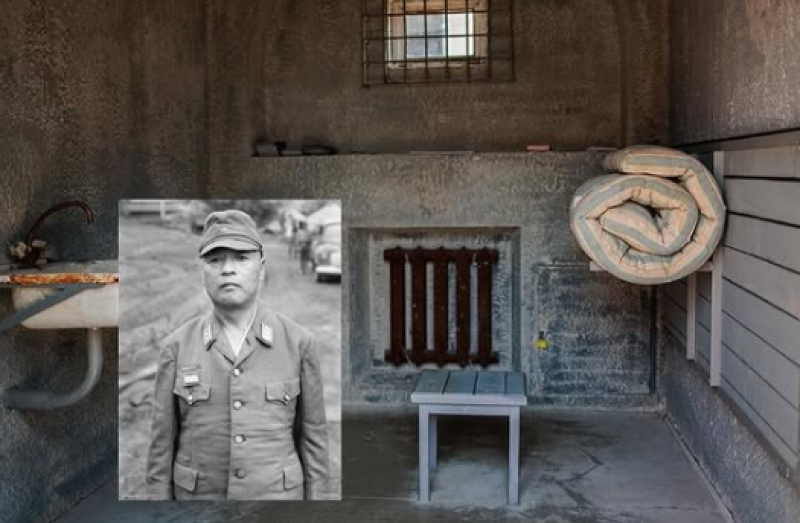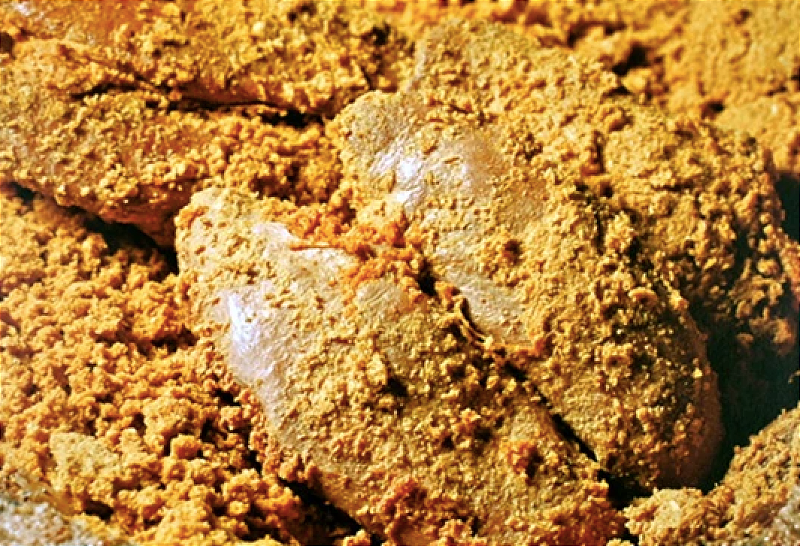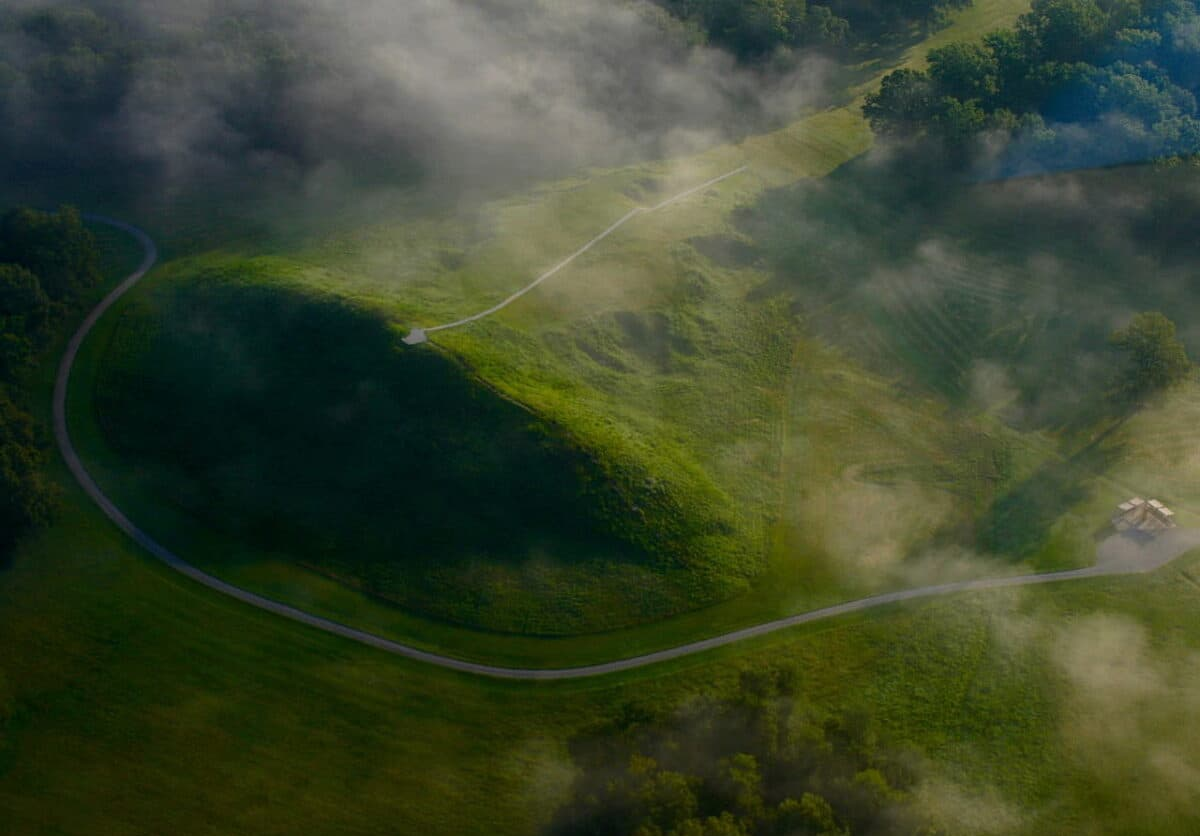He thought his sentence was too light so he built his own prison

Hitoshi Imamura was a Japanese general who served in the Imperial Japanese Army during World War II. He surrendered the Japanese forces in New Guinea and the southern Pacific Islands to Australian forces, representing the Allies, in September 1945, and was detained by the Australian Army, as he and troops under his command were accused of war crimes, including the execution of Allied prisoners of war. , and was subsequently convicted of war crimes. He was tried by an Australian military court at Rabaul on 1–16 May 1947 and convicted and sentenced to imprisonment for ten years. Imamura served his imprisonment at Sugamo Prison in Tokyo until he was released in 1954. He considered his imprisonment too light with respect to his responsibility for the crimes of his subordinates, so he had a replica of the prison built in his garden, and he stayed there until his death in 1968. (via Wikipedia)
Deep-fried pufferfish ovaries are a Japanese delicacy that can kill you

Want to try a unique delicacy that unless properly treated will kill you? It takes three years to make it right, so be warned. Ovaries of the Japanese pufferfish, called fugu, are pickled in salt and bran in Hakusan’s Mikawa district to eliminate toxic poison. It is anything but a quick process. Only 21 agencies in Ishikawa Prefecture have won permission to make pickled fugu ovary across Japan. Fifteen of them are individuals, meaning just six produce the specialty as companies. Spottyback pufferfish are sliced and trimmed during their May-June breeding season. Recovered ovaries are washed in groundwater and preserved with salt. Ovaries shrink in size over the course of a year, reducing the poison level to one-tenth of their former level. Bran is then applied to the bottoms of casks made of Japanese cedar wood, and ovaries are pickled in them. A sardine sauce is at times added over the course of two years. When the outside of the casks turns pinkish, that is a sign the contents are ready for eating. (via Asahi Shimbun)
Why did hunter-gathering tribes move thousands of tons of earth 3,000 years ago?

About 3,500 years ago, in a bend of the Mississippi River in what is now northeastern Louisiana, groups of hunter-gatherers began one of the most astonishing feats of engineering in pre-Columbian America: the construction of the colossal earthen mounds of Poverty Point, a site declared a UNESCO World Heritage Site. The magnitude of the effort is almost incomprehensible to the modern mind; conservatively, it is estimated that they moved the equivalent of 140,000 dump trucks of earth — a feat accomplished without horses, wheels, or the kind of social hierarchy traditionally assumed. Now, after an exhaustive review of the site and its surroundings, the collection of new radiocarbon dates, and a critical reevaluation of the archaeological record, researchers propose in two new papers published in Southeastern Archaeology theories that challenge previous assumptions about these communities. (via La Brujula Verde)
Hi everyone! Mathew Ingram here. I am able to continue writing this newsletter in part because of your financial help and support, which you can do either through my Patreon or by upgrading your subscription to a monthly contribution. I enjoy gathering all of these links and sharing them with you, but it does take time, and your support makes it possible for me to do that. I also write a weekly newsletter of technology analysis called The Torment Nexus.
The post office in Hawaii will let you mail a coconut without any packaging

Post offices in Hawaii, the only entirely tropical U.S. state, let visitors send unwrapped coconuts, making that wish-you–were-here sentiment even more tangible. One post office on Molokai, the fifth-largest and most rural of Hawaii's five major islands, has become a tourist destination for its Post-a-Nut program. The Ho'olehua Post Office provides coconuts free of charge along with permanent markers that people use to creatively decorate the husks before mailing the coconuts. Tourists pay only the cost of shipping. Since they can be sent to almost anywhere in the world, prices can range from around $9 to $20 (or more) depending on the coconut's weight and where it's going. Unlike the arduous process of sending baked goods through the mail, shipping coconuts is easy, as they require no packaging. (via The Takeout)
This 18th-century doctor believed that bathing in dirt would cure what ails you

In the late eighteenth century, Scottish physician James Graham (1745–1794) promoted an unconventional therapy he called "earth-bathing." He claimed that burying the body in freshly dug soil could heal everything from nervous disorders to rheumatism. For Graham, the Earth was a "great, huge Animal" whose energy could renew human health when people reconnected with it directly. Graham believed that just as the planet's systems stayed in balance, so could the body's "microclimates" be restored through contact with clean, vital soil. He preferred light, reddish soil from hillsides, taken in the morning, and thought that singing while buried helped circulate the body. Before his dirt-based cures, Graham had already attracted attention for his spectacular Temple of Health and Temple of Hymen in London, where he combined electricity, magnetism, and showmanship in over-the-top medical displays. (via Boing Boing)
Trying to keep a straight face while explaining how to get semen out of a bee

Acknowledgements: I find a lot of these links myself, but I also get some from other newsletters that I rely on as "serendipity engines," such as The Morning News from Rosecrans Baldwin and Andrew Womack, Jodi Ettenberg's Curious About Everything, Dan Lewis's Now I Know, Robert Cottrell and Caroline Crampton's The Browser, Clive Thompson's Linkfest, Noah Brier and Colin Nagy's Why Is This Interesting, Maria Popova's The Marginalian, Sheehan Quirke AKA The Cultural Tutor, the Smithsonian magazine, and JSTOR Daily. If you come across something interesting that you think should be included here, please feel free to email me at mathew @ mathewingram dot com



